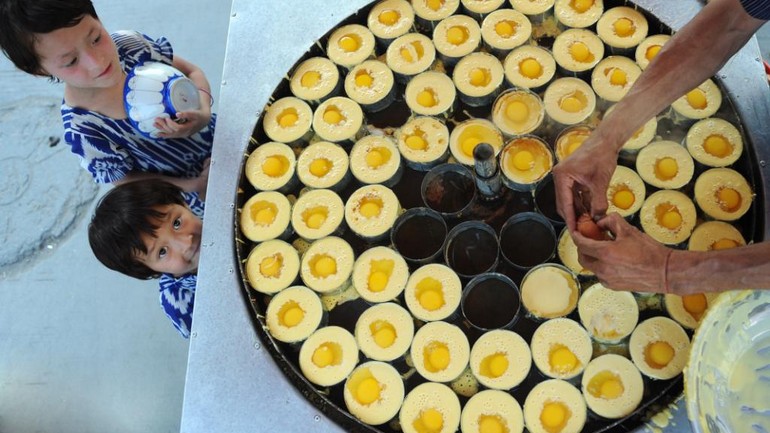
The diet in the Xinjiang Uygur autonomous region is characteristic of Muslim food and also inherits the relatively strong taste of foods in northwestern China. Most Xinjiang dishes taste tangy and spicy, and are made of beef and mutton cuts that are stir fried, roasted, steamed or made by other cooking methods.
The inland climate, with little rainwater and vast desert, rule seafood out of court in Xinjiang, but the region has abundant resources of cattle and sheep.
Uygur meals are largely based on mutton, beef, chicken, goose, carrots, tomatoes, onions, peppers, eggplant, celery, various dairy foods and fruits. A typical breakfast usually includes home-baked bread (naan), firm but smooth yogurt, olives, raisins and almonds, all washed down with tea.
Cumin seeds, red pepper flakes, salt and black pepper are most frequently used in preparing Xinjiang food.
Xinjiang food began taking roots in China when Islam made inroads into the country. The ethnic groups of the region all have their own food prohibitions and features. Generally speaking, pork is strictly forbidden on the dining table.
Uygur people like to treat guests with tea, naan and fruits before the main dishes are served. Most Uygur foods are eaten with chopsticks, a custom that has been adopted from Han Chinese culture since th



 闽公网安备 35020302035673号
闽公网安备 35020302035673号
0 responses on "Xinjiang cuisine"